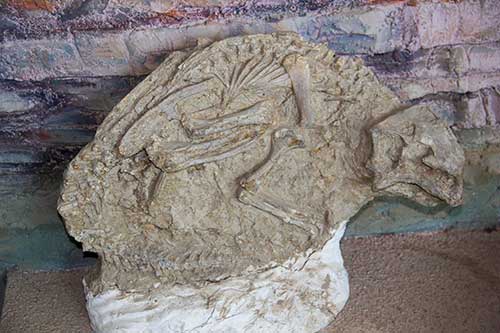The story is rather different, however. A new study, led by PhD student Chris Rogers from the University of Bristol, with a team of international collaborators from the UK, Ireland and Beijing, explored the rock outcrops around Lujiatun village as well as spectacular dinosaur skeletons in museums that had come from the site.
Mr Rogers said: “Without stratigraphic information of the fossils in the field, it was impossible to accurately establish a mode of death for these animals. Once we established proper placement of these fossils in the sedimentary sequence it became clear that these animals had been buried by sediments that were deposited by water and not by volcaniclastic flows.”
The project required matching of the museum specimens to the rock succession as measured in the field. In China many of the museum specimens are collected by local farmers, who often do not record much information about their finds.
“This was a fascinating project,” said Professor Mike Benton, Chris Rogers’ supervisor. “It was a privilege to be able to explore remote parts of China, and to work with colleagues in Beijing to follow up this piece of detective work.”
The most common dinosaur from Lujiatun is Psittacosaurus, the ‘parrot dinosaur’, which was a small plant-eater that had a hooked, parrot-like snout. Many juveniles are known, and the specimens are often found in clusters of five or six, as if they had been overcome and buried together. However, burial was in waterborne sediments.
“It was difficult to distinguish the water-carried ash from airfall ash,” said Dr Patrick Orr from University College Dublin, “but detailed study of the rocks in the field and microscopic sections showed the characteristic evidence.”
The spectacular dinosaurs from China have amazed the world since they were first discovered in the 1990s. Understanding their unique conditions of burial will help unravel the story of why so many are so exceptionally well preserved.
The research is to be published in Palaeogeography, Palaeoclimatology, Palaeoecology.
Paper
'The Chinese Pompeii? Death and destruction of dinosaurs in the Early Cretaceous of Lujiatun, NE China' by Christopher S. Rogers, David W. Hone, Maria E. McNamara, Qi Zhao, Patrick J. Orr, Stuart L. Kearns, and Michael J. Benton in Palaeogeography, Palaeoclimatology, Palaeoecology.

